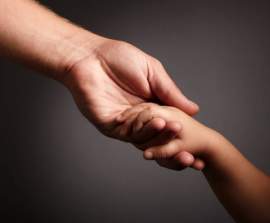
Make Sure You Know About Religion in School

For those Americans whose faith is the most important force in their life, its pervasiveness in all aspects of their life is most understandable. For children and teachers who subscribe to a particular religion and attend public school, it would not be expected that they abandon their beliefs at the door. To what extent they should be allowed to profess their faith or be restricted from doing so, though, is critical to the debate on religion in school.
Imaginably, this discussion will vary depending on the type of educational institution in which learning occurs. For example, regarding instruction in a private facility with an overt agenda in line with Christian values, recitation of prayer and other religious activities might be afforded greater leniency. Religion in a public school, on the other hand, requires more parsing out as public schools exist for the benefit of children from all faiths.
Regarding the teaching of religion in school, it has been summarily stated that one may only teach about religion in public school, not teach religion itself. What this means is that teachers can provide a social and religious context for historical events, works of music and visual art, and other areas where the subject matter is related to matters of faith without expressly endorsing the represented religion.
On a related note, even in the case of holidays of a religious timbre, religion in school is somewhat restricted. Once more, educators may lecture about the overall context behind an occasion's creation, but may not celebrate in a way that emphasizes the sectarian nature of festivities above those of another religion. Thus, religion in public school is not altogether banned, but the ways in which it is framed are nonetheless important to its acceptability.
As for how children may influence the presence of religion in school, as students they are afforded significant amounts of freedom, but certainly may not turn the classroom or auditorium into a pulpit. In other words, oral reports on religious matters may not be little more than a student's particular faith-oriented views (again, at-length discussions are meant to be of an academic nature), and remarks in class expressing a specific stance must be germane to the topic being explored.
That said, educators should not necessarily censor a viewpoint put forth by a student just because it clashes with their own values or argues against a rival dogmatic principle. If comments made by a student are relevant to the class's pursuits and respectful, they are protected by rights to free speech.
Meanwhile, as for children engaging in religious activities outside the classroom on school grounds, public displays of faith do have their time and place. In a non-pressuring way, students may hand out materials espousing certain views of faith, but only at appointed locations outside of normal class hours. Similar provisions exist for children who hold their own meetings before and after school as part of informal get-togethers or even organized clubs dedicated to the study of religion. In short, there are numerous ways in which religion in public school is permissible for youths.
NEXT: Make Sure You Know the Laws in School





















